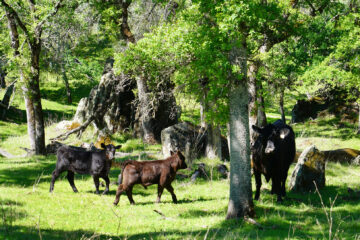Frogs play an important role in the ecosystem food web in every stage of their lifecycle. Tadpoles feed on algae, adult frogs keep the insect population under control, and frogs are a key food source for numerous predators. Amphibians are sensitive creatures; their skin is highly permeable skin and it absorbs environmental toxins. This trait makes frogs incredibly accurate bioindicators. A bioindicator is an organism whose health reflects the status of the ecosystem. Unfortunately, frogs are declining worldwide and it is reflecting the poor state of the environment.
The International Union for Conservation of Nature estimates that 30% of amphibian species are threatened with extinction and close to 200 species have gone extinct already. There are also 500 species of frogs that are so threatened that the only way to remedy their dismal future is through comprehensive conservation efforts; these species will not rebound on their own.
Frogs also have a significant aspect in medical research. Frog limb development is currently being studied to further regenerative medicine discoveries. Scientists have also found that secretions from the skin of frogs could be used to treat cancer and develop new pain-killers.
To further educate people and celebrate the beloved amphibian, the charity, Save The Frogs!, coordinates a worldwide, Save The Frogs! Day. This event took place on April 25th 2015 with the goal of making the “amphibian extinction crisis common knowledge”. The Effie Yeaw Nature Center in Carmichael acknowledged this charitable celebration by holding a Save The Frogs! Day event. The center had their wonderful resident amphibians on display, and Save The Frogs! Advisory Committee Chairman Michael Starkey shared photos of frogs from around the world. Starkey then took all those in attendance for a field study at the pond and walk through the nature preserve.
Placer Land Trust is also no stranger to the amphibian crisis. In 2010, Placer Land Trust helped to permanently protect the Big Gun Preserve with a conservation easement. This preserve provides a crucial habitat for the largest population of the threatened California Red-Legged Frog (Rana draytonii) in the Sierra Nevada.
With the hard work of charitable organizations like Placer Land Trust and Save The Frogs!, the shrinking amphibian population has a chance. By tenaciously continuing public outreach, saving habitats, and providing education we can, and will, save the frogs!
By Alyssa Harmon

